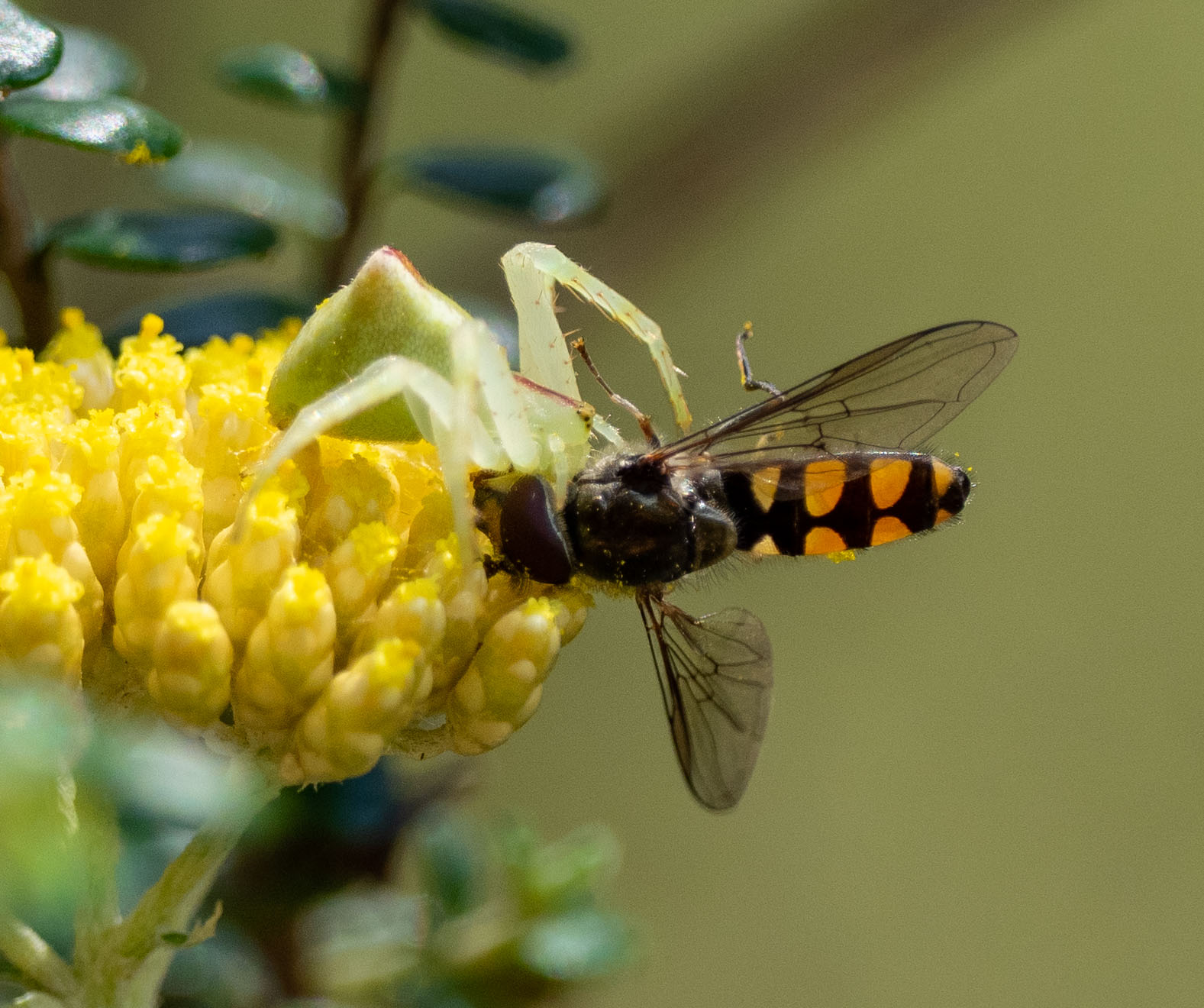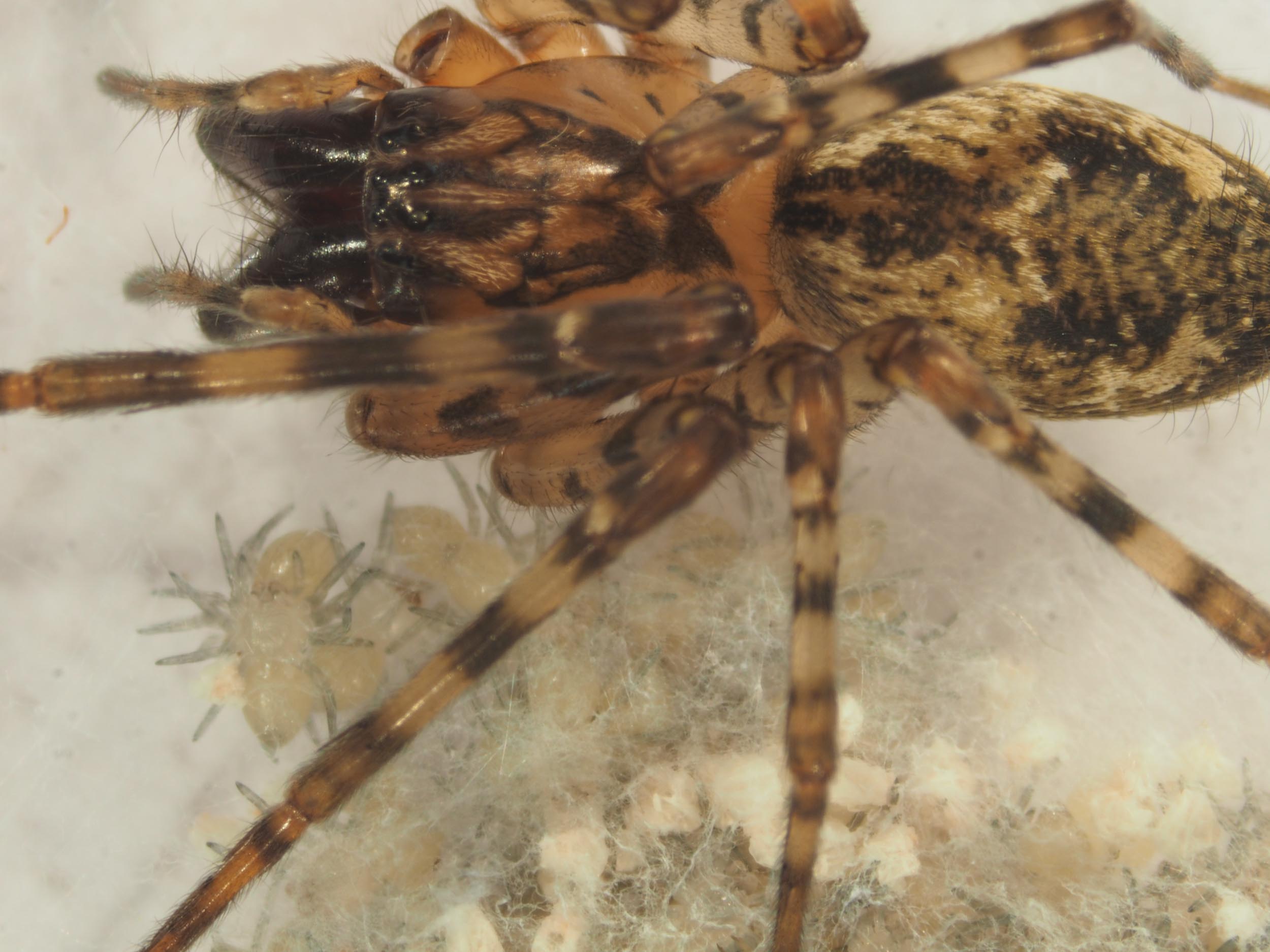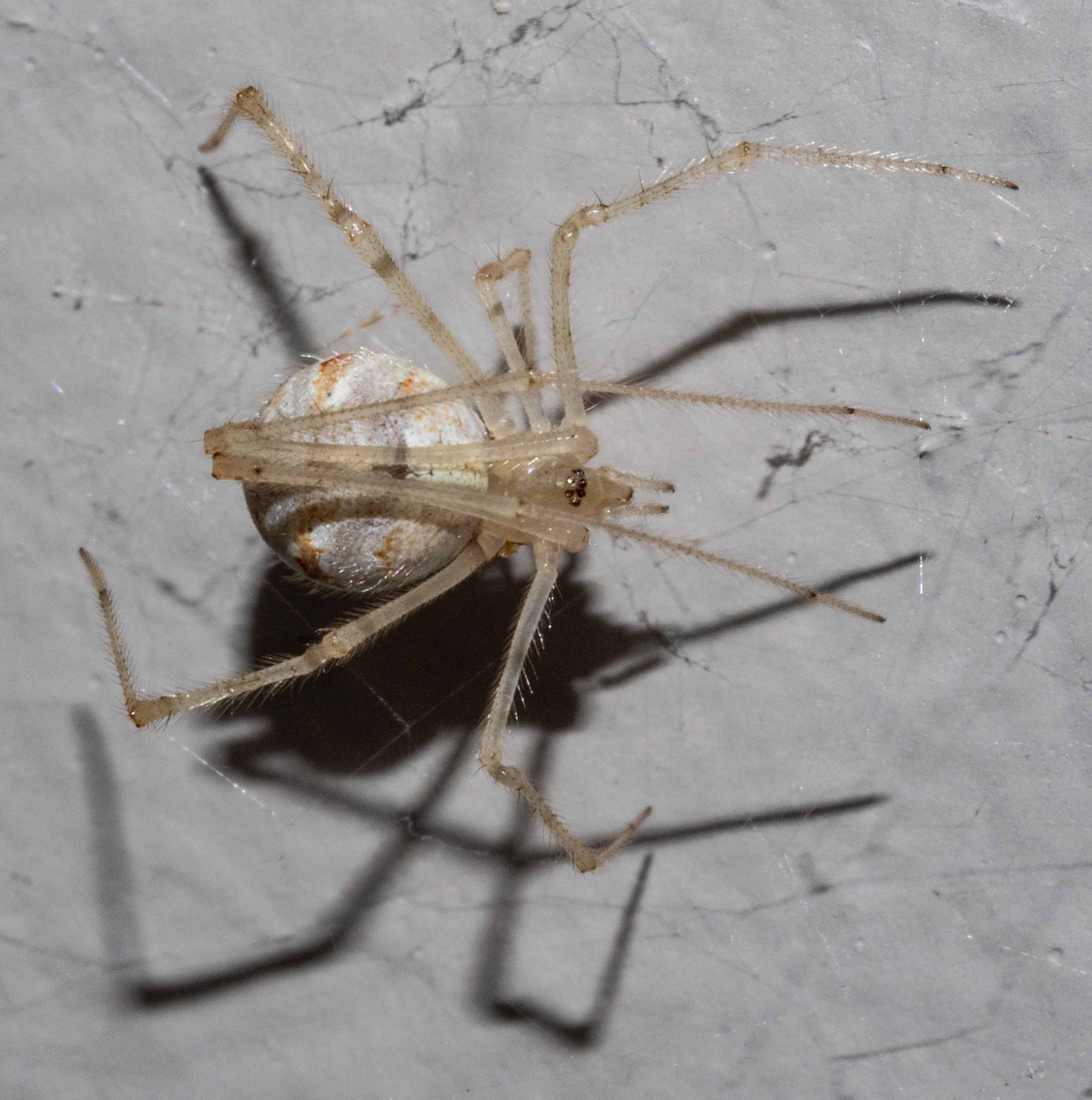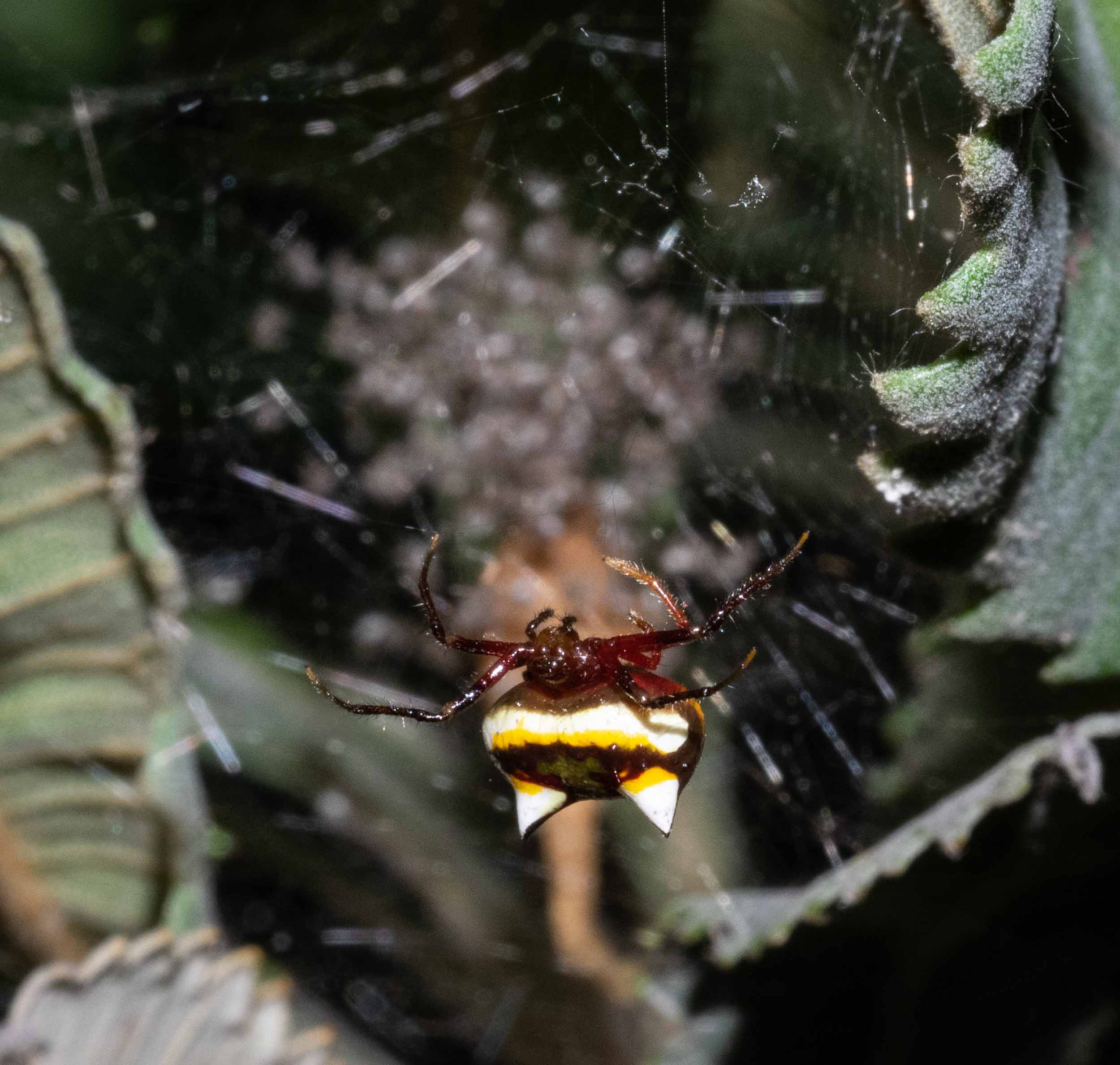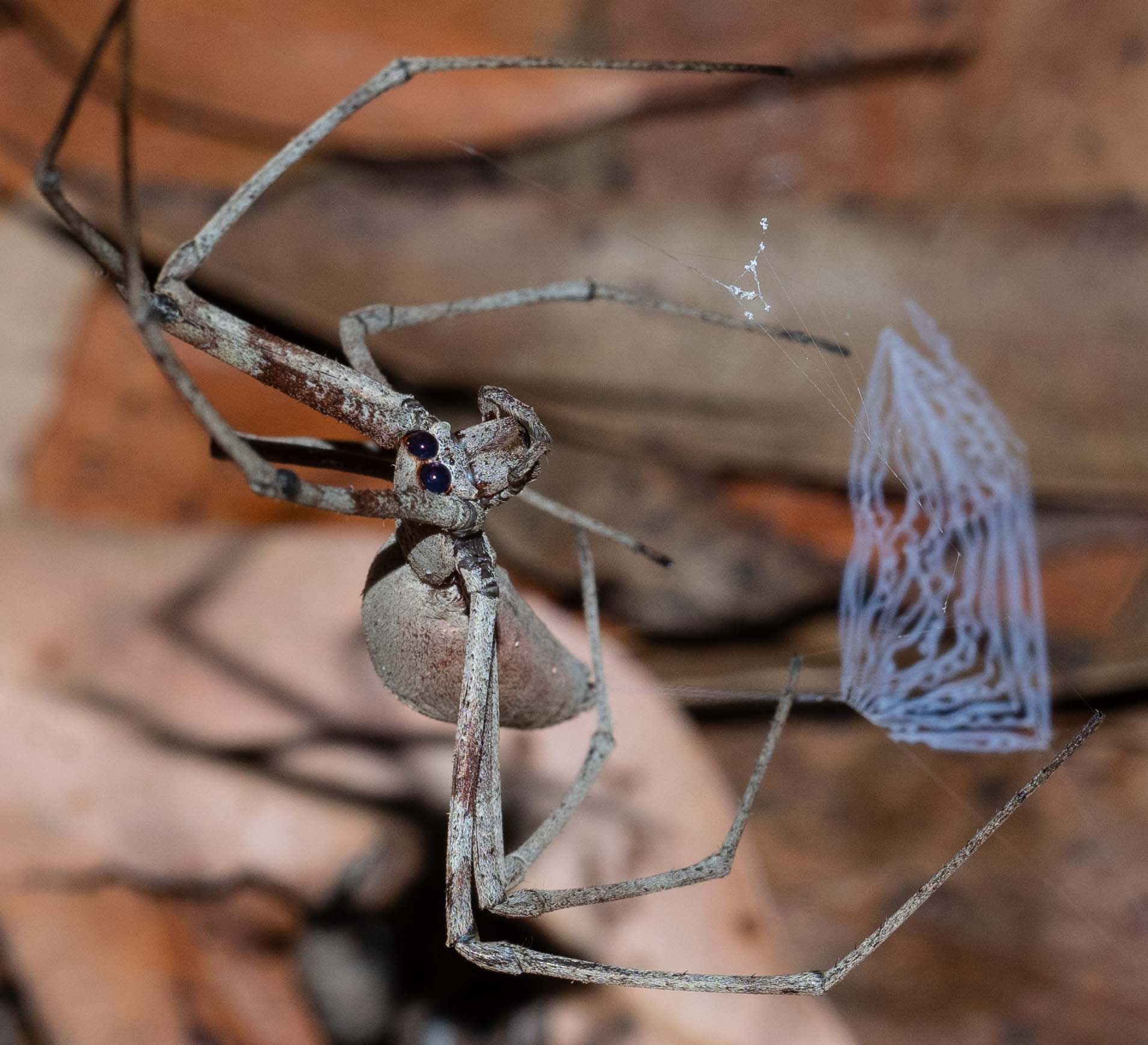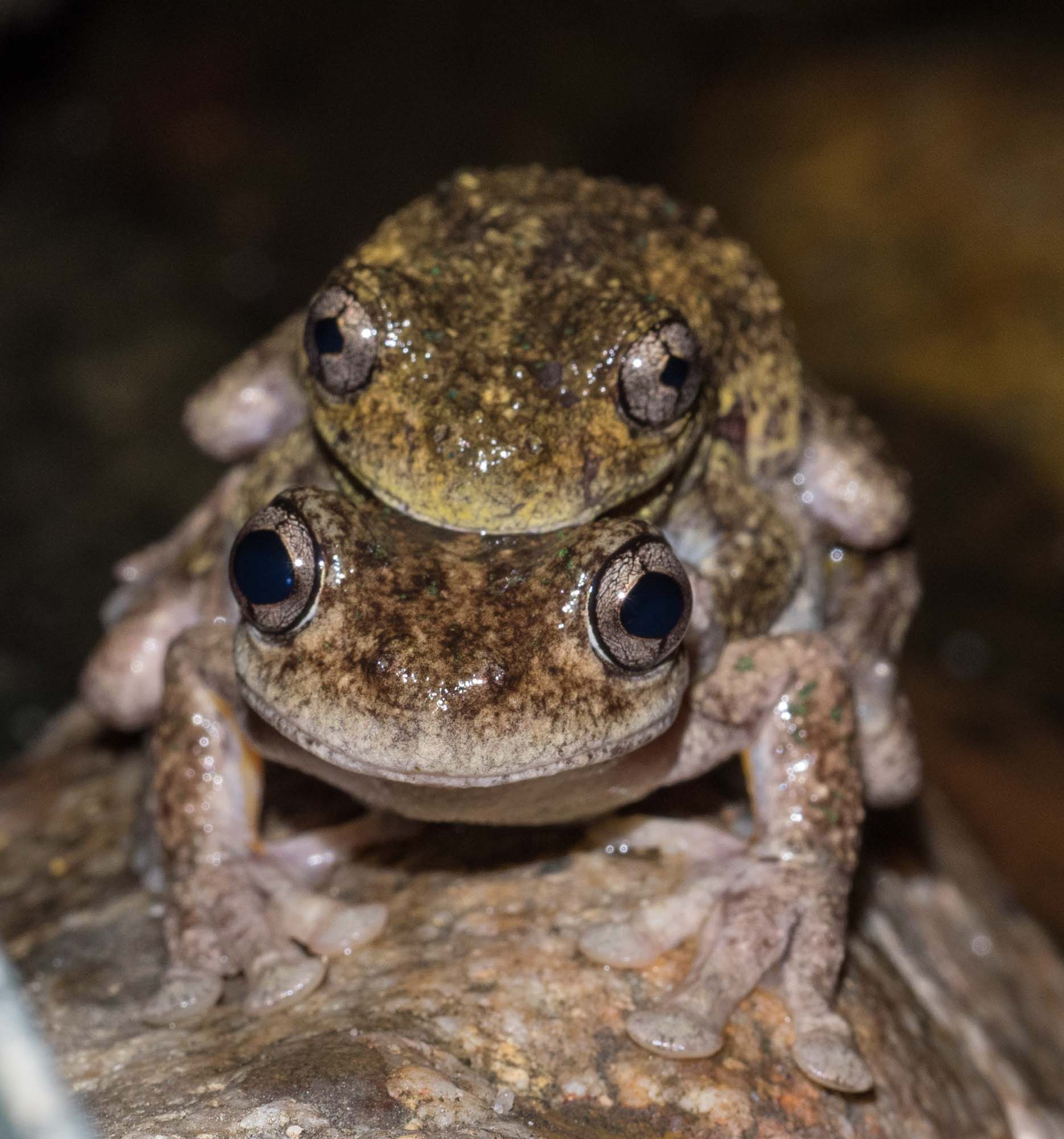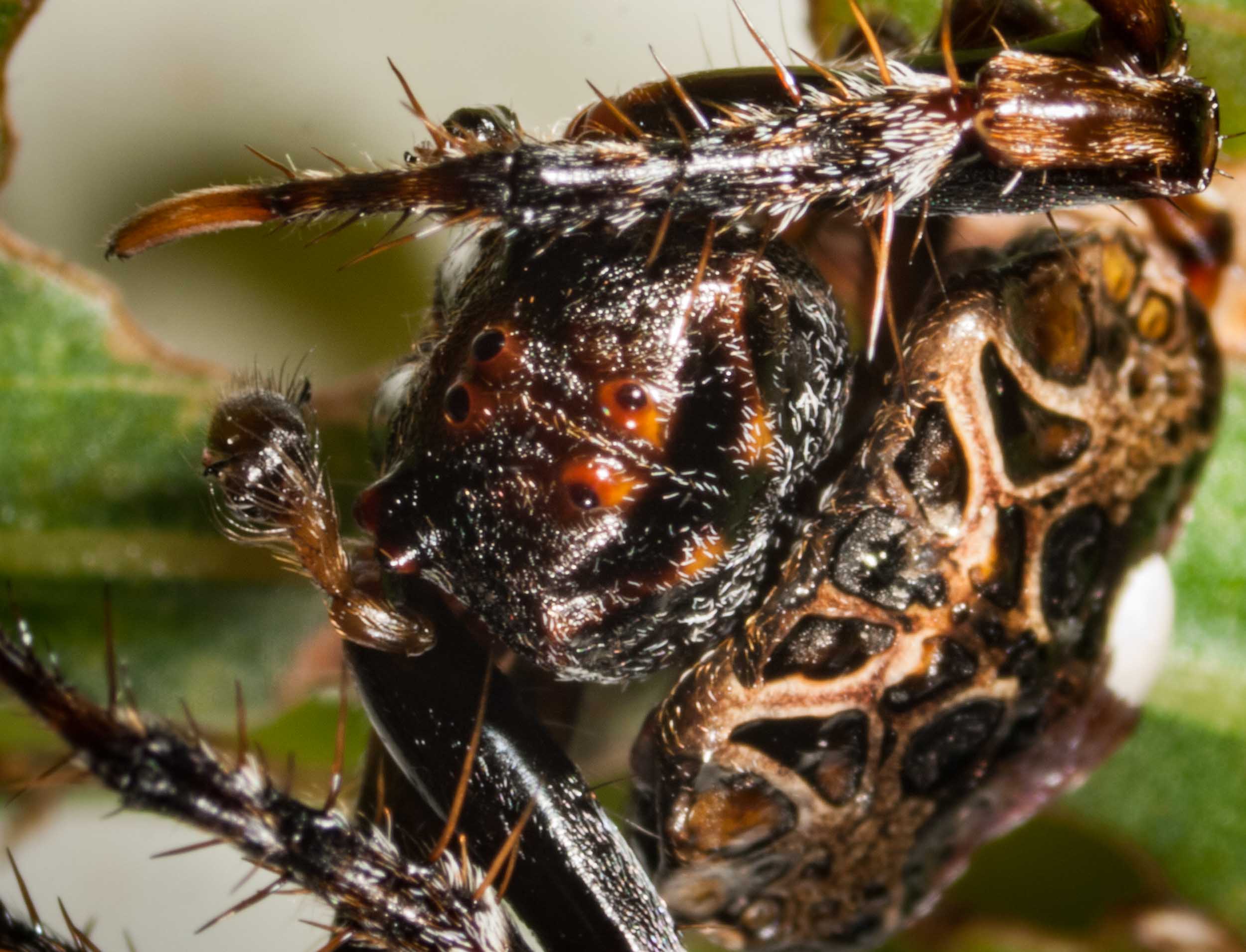Cryptic spiders
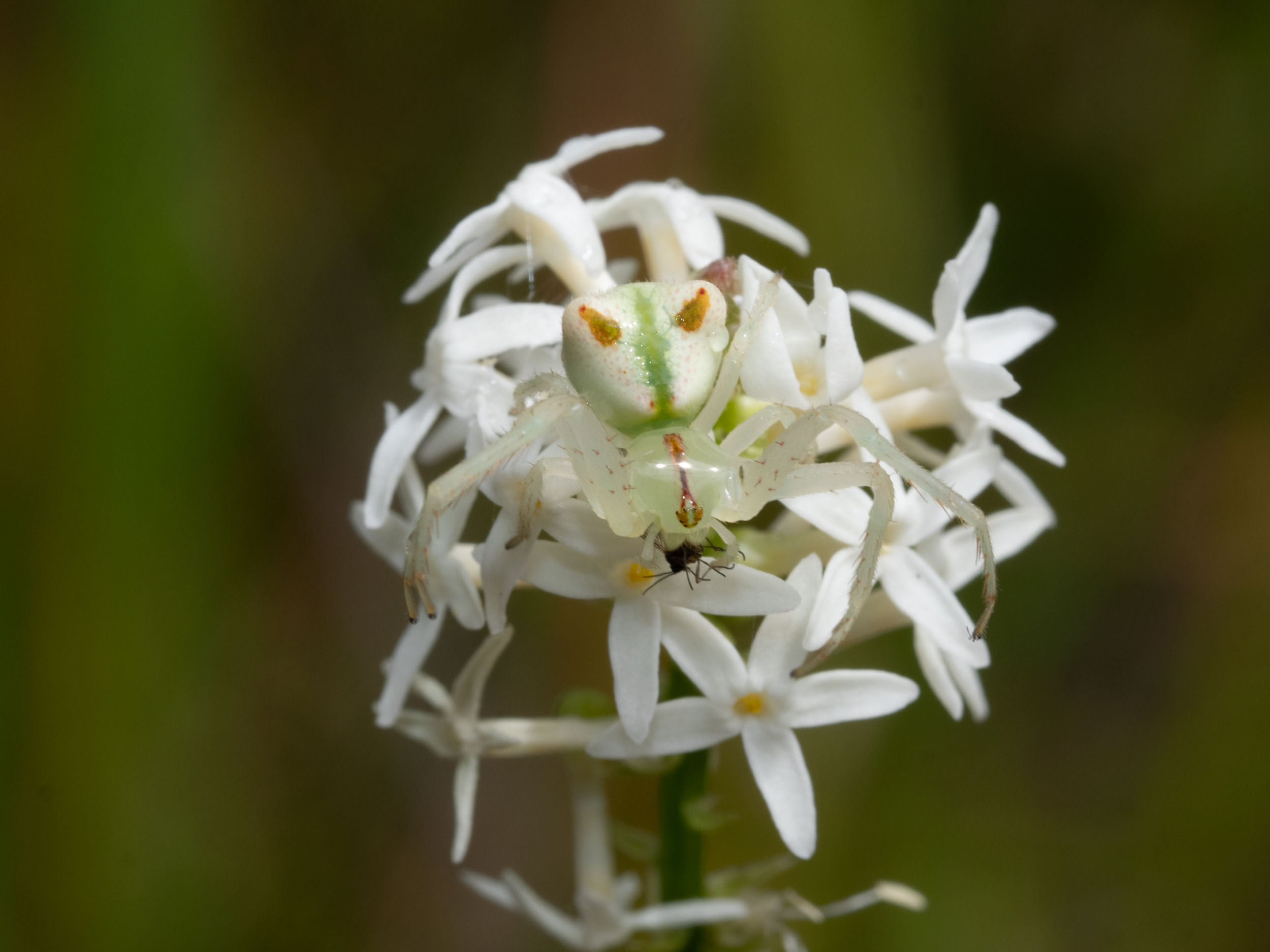
After nine weeks travelling through the southwest of WA, we’ve returned to find that Spring has transformed our home forest. There are bird calls we’ve not heard since early Autumn, and the frogs are competing loudly for the prime spots around the pond.
But it’s the insects and spiders that really signal the change of seasons,
Despite the colourful beetles, butterflies and moths, it was a cryptic little spider that caught my attention.
Stackhousia are eye-catching flowers. When young, the vertical spikes are covered in tubular white flowers, with spreading petals. But I noticed one plant that looked a little odd. The usually regular array at the top of the spike was disrupted somehow.
It was only when I was very close that I saw the small crab spider.
Stackhousia monogyna (‘Creamy Candles’) Photo taken 13th November
These spiders are ambush hunters. They don’t prowl and pounce like wolf spiders and huntsman. Nor do they build prey-capture webs. They just sit on a flower and wait for an insect to visit.
Red-tipped Crab Spider (Sidymella rubrosignata) … photo taken 16th Nov, on the same flower
While her camouflage isn’t perfect, it seems good enough.
It’s tempting to view this as a deliberate strategy of the spider. White spider, hidden on a white flower, waiting for unsuspecting flower-feeders to arrive. And, in part, that’s true. But it’s always dangerous to see the world through only human eyes. What does her prey see? Or perhaps it’s her predators she’s hiding from.
I decided it was time I learned a little more about these spiders, so I made a plan to do some reading. But before I got started, I went for one more prowl around the forest. It’s not easy to sit at a computer when there’s so much going on outside!
And it seemed as if nature was trying to show me something.
My white girl had caught herself a rather large breakfast. And then down the track I spotted another of these spiders, also feasting on a fly. But this time the flower was yellow, and so was the spider!
OK, back to the books.
Yes, it’s apparently the same species of spider. Sidymella rubrosignata is reported to be a ‘rather variable’ species and therefore tricky to identify, but my two had near-identical markings and body shape … just different colours.
The spider family Thomisidae – the crab spiders - is known to include some species which are able to change their body colour to match their surroundings. Whether Sidymella is capable of this I don’t know … and perhaps it is has not been tested.
Crab spiders choose flowers based on their own colour
There seems to be good evidence, however, that many crab spiders take their own colour into account when choosing a floral perch. In a study of the Australian species Thomisus spectabilis, the authors found that yellow individuals chose yellow flowers 95% of the time (Ref. 1). Interestingly, white individuals weren’t so fussy. They showed some bias toward white flowers, but not nearly so strongly.
The ‘camouflage’ trick does make a difference … it actually attracts bees!
In a series of experiments, the researchers found that this colour matching behaviour of the spiders does influence the behaviour of honey bees … but not quite as expected. The bees seem blind to the presence of yellow spiders, whatever the flower colour. However, they are actually attracted to white spiders! (Ref. 1)
Intriguingly, Australian bees are not fooled. They see the spiders and avoid them.
It seems that blow flies, on the other hand, are an easy meal. Research on crab spiders overseas has shown that Lucilia fail to detect the colour-matched spiders (Ref. 2).
The take-home message from these studies? Interpretation of animal camouflage can be misleading unless we think about what species the camouflage is directed towards.
References
Colouration in crab spiders: substrate choice and prey attraction. Heiling, A.M., Chittka, L., Cheng, K. & Herberstein, M.E. (2005). Journal of Experimental Biology 208, 1785-1792. (download pdf)
Background colour matching by a crab spider in the field: a community sensory ecology perspective. Defrize, J., Théry, M. and Casas, J. (2010) Journal of Experimental Biology 213, 1425-1435 (download pdf)
























